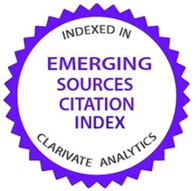Vigencia y limitaciones de la guerra híbrida
DOI:
https://doi.org/10.21830/19006586.228Palabras clave:
guerra híbrida, conflicto irregular, guerra asimétrica, guerra convencional, transformaciónResumen
La guerra híbrida es uno de los numerosos conceptos barajados hoy en día por la comunidad de defensa internacional para definir las “nuevas guerras” del siglo XXI. Concebida para advertir de una tipología de conflicto que parece integrar el empleo de medios convencionales e irregulares, la guerra híbrida está recibiendo una gran atención a pesar de las controversias que genera. El artículo presenta el concepto de amenaza híbrida, estudia su configuración teórica, identifica sus características fundamentales y evalúa su utilidad práctica.
Descargas
Referencias bibliográficas
Aaronson, M.; Diessen, S.; De Kermabon, Y.; Long, M. & Miklaucic, M. (2011). NATO countering the hybrid threat. Prism, 2 (4), 111-124.
Allied Command Transformation [ACT] (2009). Multiple futures project: Navigating Towards 2030, Norfolk, VA: OTAN.
Arquilla, J. (2007). The end of war as we knew it? Insurgency, counterinsurgency and lessons from the forgotten history of early terror networks. Third World Quarterly, 28 (2), 369-386.
https://doi.org/10.1080/01436590601153861
Arquilla, J. & Rondfeldt, D. (2000). Swarming & the Future of Conflict: Santa Monica, CA: RAND Corporation.
PMid:10903461
Braud, J. (2003). La guerre asymétrique ou la défaite du vainqueur, Mónaco: La Rocher.
Brister, P.; Natter, W & Tornes, R. (2011). Hybrid warfare and transnational threats: Perspectives from an era of persistent conflict. Nueva York, NY: Council for Emerging National Security Threats.
Bunker, R. (ed.) (2008). Criminal-States and Criminal Soldiers, Nueva York, NY: Routledge.
Challiand, G. (2005). Guerres et civilisations: De l’Assyrie à l’ère contemporaine. París: Editions Odile Jacob.
Clausewitz, C. (1989 [1832]). On war, Princeton, NJ : Princeton University Press.
Coerr, S. (2009). Fifth generation war: Warfare versus the non-state”. Marine Corps Gazette, 93 (1), 68-74.
Colom, G. (2011a). Los límites del paradigma estratégico israelí. UNISCI Discussion Papers, 26, 59-73.
Colom, G. (2011b). La evolución de la concepción operativa basada en efectos. Política y Estrategia, 117, 61-77.
Colom, G. 2010). Los límites del poder militar estadounidense. Política y Estrategia, 116, 190-208.
Colom, G. (2008). Entre Ares y Atenea: el debate sobre la Revolución en los Asuntos Militares. Madrid: Instituto Universitario General Gutiérrez Mellado.
Cordesman, A. (2007). Lessons of the 2006 Israeli-Hezbollah war. Washington DC: Center for Strategic and International Studies.
Departament of Defense (2007). Irregular Warfare Joint Operating Concept. Washington DC: U.S. Government Printing Office.
Departament of Defense (2005). National Defense Strategy of the United States of America. Washington DC: U.S. Government Printing Office.
Department of the Army (2010): Hybrid threat, Training Circular (TC) 7-100, Washington DC: Department of the Army.
Desportes, V. (2009). La guerre probable. París: Economica.
Echevarria, A. (2005). Fourth generation war and other myths. Carlisle Barracks, PA: U.S. Army Strategic Studies Institute.
Esdaille, C. (2006). Espa-a contra Napoleón. Barcelona: Edhasa.
Fatjó, P. & Colom, G. (2008). La guerra asimétrica: Olvidando la historia, en C. Cueto (Coord.). Los desafíos de las Fuerzas Armadas en el siglo XXI, p. 65-74. Granada: Ed. Comares.
Fleming, B. (2011). The hybrid threat concept: Contemporary war, military planning and the advent of unrestricted operational art. Fort Leavenworth, KA: U.S. Army Command and General Staff College.
https://doi.org/10.21236/ADA545789
Gates, R. (2009). A balanced strategy: Reprogramming the Pentagon for a new age. Foreign Affairs, 89 (1), 6-18.
General Accountability Office (2010). Hybrid warfare. GAO 10-1036R. Washington DC: U.S. General Accountability Office.
Glenny, M. (2008). McMafia: Crime without Frontiers. Londres: The Bodley Head.
Gray, C. H. (1997). Postmodern wars: The new politics of conflict. Nueva York, NY: Guilford Press.
Gray, C. S. (2010). The strategy bridge. Theory for practice. Londres: Oxford University Press.
https://doi.org/10.1093/acprof:oso/9780199579662.001.0001
Gray, C. S. (2006). Irregular enemies and the essence of strategy: Can the American Way of War adapt?. Carlisle Barracks, PA: U.S. Army Strategic Studies Institute.
Gray, C. S. (2005). Another bloody century: Future warfare. Londres: Orion.
Hammes, T. (2005). War evolves into the fourth generation. Contemporary Security Policy, 26 (2), 7-18.
https://doi.org/10.1080/13523260500190500
Hammes, T. (2004). The sling & the stone: On war in the 21st Century. St. Paul, MN: Zenith Press.
Hanson, V. (2000). The western way of war. Berkeley, CA: University of California Press.
Hoffman, F. (2010). Hybrid Threats: Neither omnipotent nor unbeatable. Orbis, 54 (3), 441-455.
https://doi.org/10.1016/j.orbis.2010.04.009
Hoffman, F. (2009a). Hybrid warfare and challenges. Joint Force Quarterly, 52, 34-39.
Hoffman, F. (2009b). Hybrid vs. Compound war: The Janus choice, defining today's multifaceted conflict. Armed Forces Journal International, 146 (8), 6-12.
Hoffman, F. (2007). Conflict in the 21st Century: The rise of hybrid wars. Arlington VA: Potomac Institute for Policy Studies.
Hoffman, F. (2006). Complex-irregular warfare: The next Revolution in Military Affairs. Orbis, 50 (3), 395-411.
https://doi.org/10.1016/j.orbis.2006.04.002
Huber, T. (ed.) (1996). Compound warfare: That fatal knot. Fort Leavenworth, KA: U.S. Army Command and General Staff College Press.
Huovinen, P. (2011). Hybrid warfare – Just a twist of compound warfare? Views on warfare from the United States Armed Forces perspective. Helsinki: National Defense University.
Inglehart, R. (1991). El cambio cultural en las sociedades industriales avanzadas. Madrid: Siglo XXI.
Johnson, D. (2010). Military capabilities for hybrid war: Insights from the Israel Defense Forces in Lebanon and Gaza. Santa Monica, CA: RAND Corporation.
Joint Chiefs of Staff (1999). Joint strategy review 1999. Washington DC: U.S. Government Printing Office.
Kilcullen, D. (2009). The accidental guerrilla: Fighting small wars in the midst of a big one. Nueva York, NY: Oxford University Press.
PMid:19579115
Lasica, D. (2009). Strategic implications of hybrid war: A theory of victory. Fort Leavenworth, KA: U.S. Army Command and General Staff College.
Liang, Q. & Xiangsui, W. (2004). La guerre hors limites. Paris: Rivages.
Krulak, C. (1999). The strategic corporal: Leadership in the three block war. Marines Magazine, 83, 18-22.
Lind, W; Nightengale, K.; Schmitt, J.; Sutton, J. & Wilson, G. (1989). The changing face of war: Into the fourth generation. Marine Corps Gazette, 73 (10), 22-26.
Lyon, D. (1994). Postmodernidad. Madrid: Alianza Editorial.
https://doi.org/10.1353/pmc.1994.0014
Matthews, M. (2008). We were caught unprepared: the 2006 Hezbollah-Israeli war. Fort Leavenworth, KA: U.S. Combat Studies Institute.
Mattis, J. & Hoffman, F. (2005). Future warfare: The rise of hybrid warfare. U.S. Naval Institute Proceedings, 132 (11), 30-32.
McCuen, J. (2008). Hybrid wars. Military Review, 83, 107-113.
McIvor, A. (ed.) (2005). Rethinking the principles of war. Annapolis, MD: U.S. Naval Institute Press.
Naïm, M. (2006). Ilícito: Como el contrabando, los narcotraficantes y la piratería desafían la economía global. Madrid: Debate.
PMCid:PMC2062568
Nemeth, W. (2002). Future war and Chechnya: A case for hybrid warfare. Monterrey, CA: Naval Postgraduate School.
Organización del Tratado del Atlántico Norte [OTAN] (2010). Active Engagement, Modern Defence, Bruselas: OTAN.
Pérez Triana, J. (2010). Guerras Posmodernas. Barcelona: ElCobre.
Peters, R. (1995). The culture of future conflict. Parameters, XXV (4), 18-27.
Sánchez, F. (en prensa). El conflicto híbrido, ¿una nueva forma de guerra?. En. R. Calduch (Coord.). El enfoque multidisciplinar a los conflictos híbridos. Madrid: Centro Superior de Estudios de la Defensa Nacional.
Smith, R. (2005). The utility of force: The art of war in the modern world. Londres: Allen Lane.
Van Creveld, M. (2000). Through a glass, darkly: Some reflections on the future of warfare. Naval War College Review, 53, (4), 25–44.
Van Creveld, M. (1991). The transformation of war. Nueva York, NY: The Free Press.
Wilkie, R. (2009). Hybrid warfare: Something old, not something new. Air&Space Power Journal, XXII (4), 14-17.
Williamson, S. (2009). From fourth generation warfare to hybrid war. Carlisle Barracks, PA: U.S. Army War College.
Descargas
Publicado
Cómo citar
Número
Sección
| Estadísticas de artículo | |
|---|---|
| Vistas de resúmenes | |
| Vistas de PDF | |
| Descargas de PDF | |
| Vistas de HTML | |
| Otras vistas | |

























